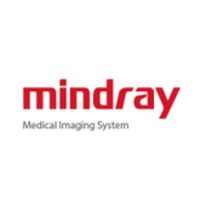New findings highlight the urgent need to reduce contamination risk through standardized, aseptic non-touch technique
A new clinician poll conducted by Nancy Moureau, RN, PhD, CRNI, CPUI, VA-BC, has found that relatively few healthcare facilities have established a standardized process for maintaining proper aseptic non-touch technique during ultrasound-guided peripheral IV (UGPIV) insertion. The findings have important implications for patient safety.
A large majority (86 percent) of poll respondents said they understand the ultrasound transducer and gel are sources of contamination during UGPIV placement. But less than one-third said inserters at their facilities always use sterile probe covers or sterile gel in order to maintain proper aseptic technique. Only 39 percent said their facilities had established a standardized set of steps and policies regarding ultrasound-guided PIV insertions.
The national poll of 528 vascular access specialists was conducted in March 2019 as part of a webinar called “Standardizing & Streamlining UGPIV Procedures.” The webinar was led by Dr. Moureau, an internationally recognized expert and consultant in vascular access, and the CEO of PICC Excellence. The webinar was co-sponsored by the Association for Vascular Access and Parker Laboratories.
“This poll provides quantitative evidence that there is a tremendous amount of variation in UGPIV insertion techniques, said Moureau. “An aseptic non-touch insertion technique reduces the risk of contamination, but its effectiveness is diminished if proper protocols aren’t followed.” She added that there is a huge unmet need to promote greater understanding of proper aseptic technique, minimize contamination with PIV insertion and implement methods to standardize the process to ensure patient safety.
PIV insertion is the most commonly performed invasive medical procedure in hospitalized patients. Approximately 70 percent of patients require IV access at some point during their stay. Nearly 60 percent of those patients are considered to have difficult vascular access (DiVA), Moureau said.
DiVA patients require ultrasound guidance in order to successfully achieve peripheral access and administer necessary treatments. However, the use of ultrasound increases the risk of contamination due to extended procedure time and the presence of the transducer and gel in the sterile puncture area.
IV catheters may remain in place for up to a week or more as many facilities move towards a clinically indicated replacement strategy - meaning catheters are only replaced in the event of complications instead of at regular intervals.
These longer dwell times can significantly reduce healthcare costs. But they also increase the need for proper aseptic, non-touch insertion techniques that minimize the potential for initial contamination and infection. Infection control methods, such as sterile probe covers and single- use sterile gel packets, can limit the risk of infection, but these methods significantly increase both the length and cost of the procedure.
Moureau recommends use of a combination barrier and securement dressing that prevents the ultrasound transducer and gel from coming into contact with the skin. The dressing enables a better aseptic insertion technique and lowers costs by eliminating the need for additional securement dressings, sterile gels and probe covers.
“A dressing that can separate the gel and transducer from the insertion site is key to making these PIV insertions safer, faster and more cost effective,” she said. “By not applying gel directly to the patient’s skin, the specialist can maintain a better aseptic non-touch technique. That in turn lowers infection risk and eliminates time-consuming post-procedure clean up.”
Vascular access nurses also need proper education on the use of ultrasound-guidance for PIV insertion, she said.
Before introducing any new technology or device, she added, “Hospitals should educate clinicians on their use with a systematic process in order to better protect patients.”
PICC Excellence is currently developing an ultrasound-guided peripheral catheter certification program, which it plans to release by the end of 2019.
About Dr. Nancy Moureau and PICC Excellence
Nancy Moureau, RN, PhD, CRNI, CPUI, VA-BC, is the owner and president of PICC Excellence, a vascular access education and training service for clinicians. She is a member of the Alliance for Vascular Access Teaching and Research Group (AVATAR) based in Australia. Recognized as an international expert in vascular access education and training, she is widely published in the medical literature, including recent guidelines that defined appropriate indications for insertion, maintenance, and care of PICCs. PICC Excellence provides effective, easy-to-understand in-person and web-based education and training for clinicians worldwide.
For more information about PICC Excellence, visit www.piccexcellence.com
Latest Articles
Ultrasound, education, patient safety, infection, Parker Laboratories, Ultrasound guidance, UGPIV procedures, Nancy Moureau, aseptic ultrasound-guided peripheral insertion, UGPIV placement, sterile probe covers, sterile gel, ultrasound-guided PIV insertions, contamination with PIV insertion, difficult vascular access, infection control method, single-use sterile gel packets, barrier and securement dressing, PICC Excellence
Poll finds patient safety is threatened by current ultrasound-guided PIV insertion techniques



























